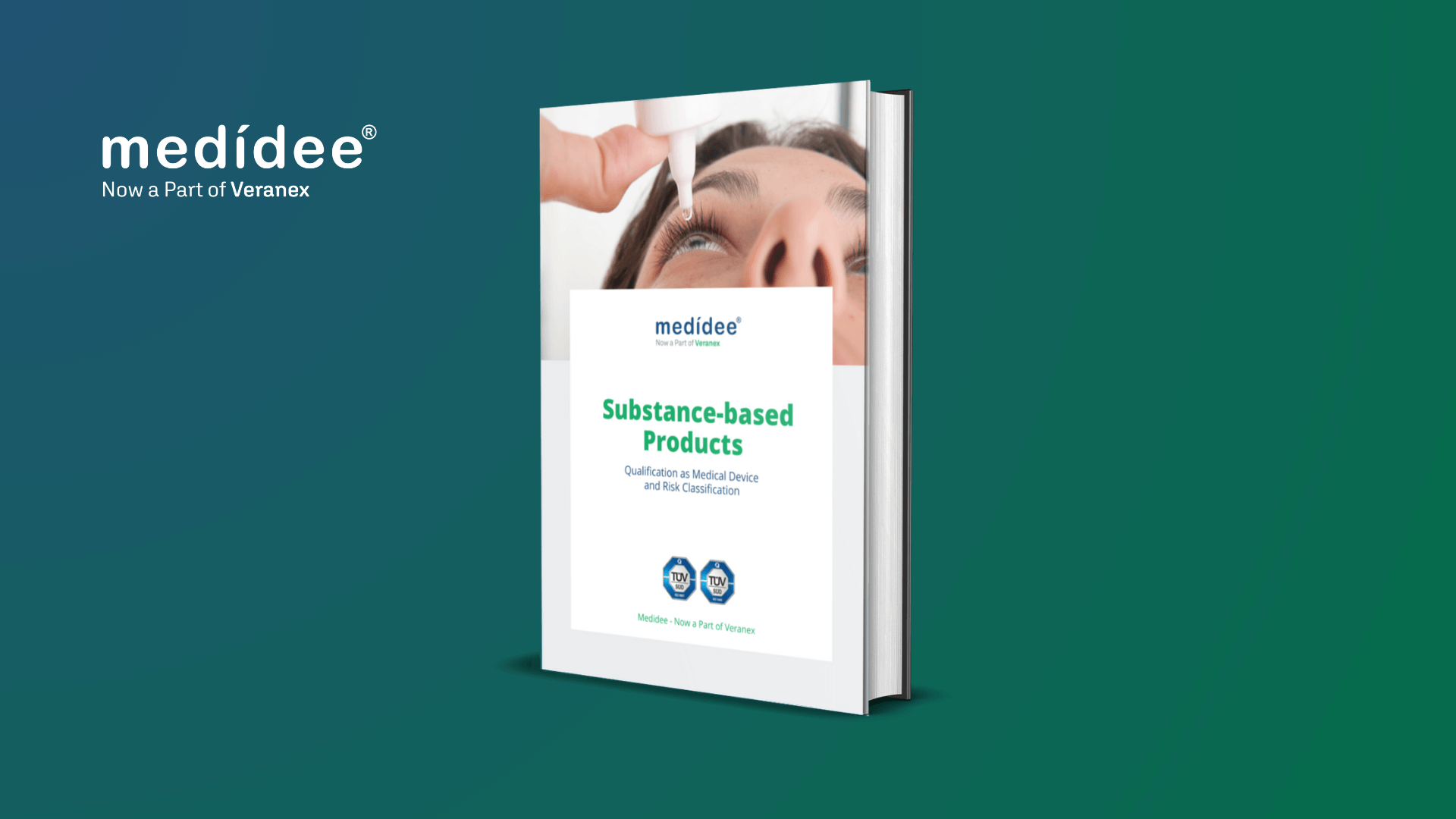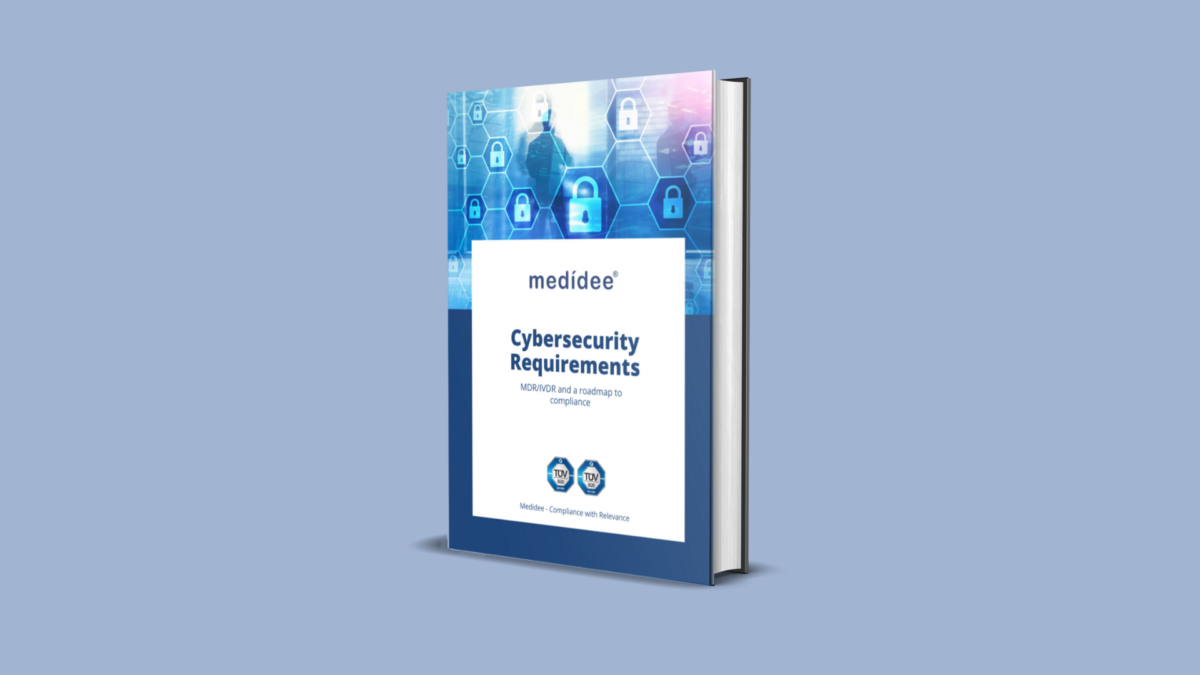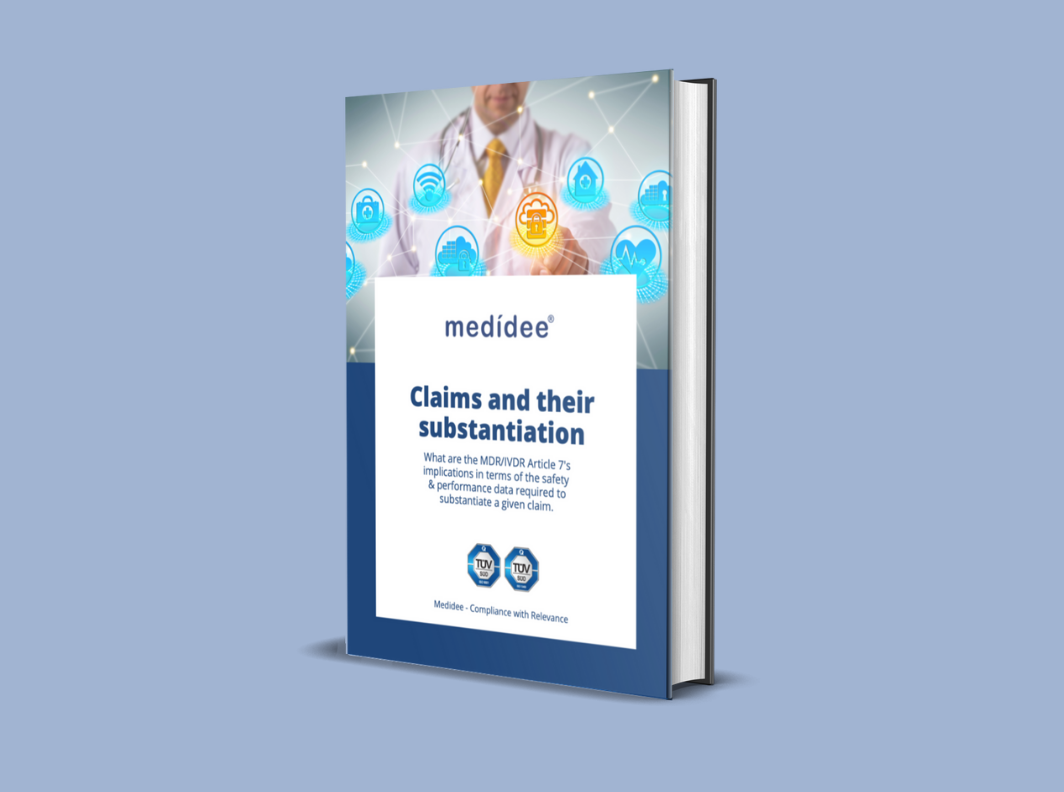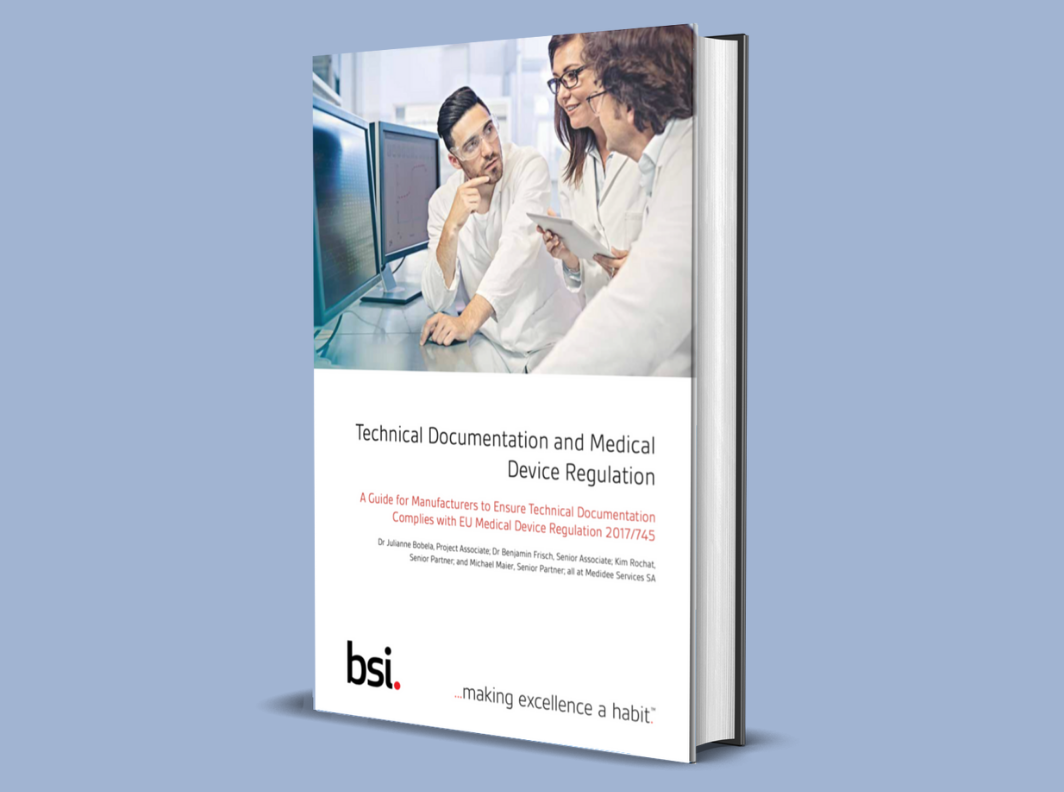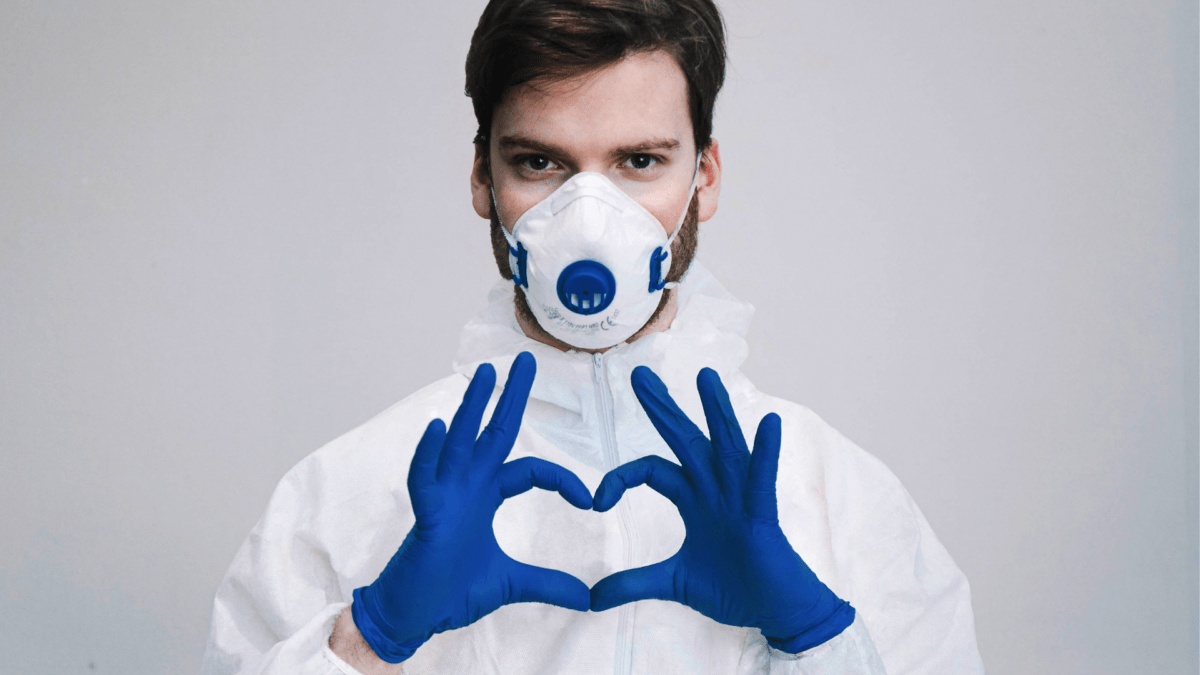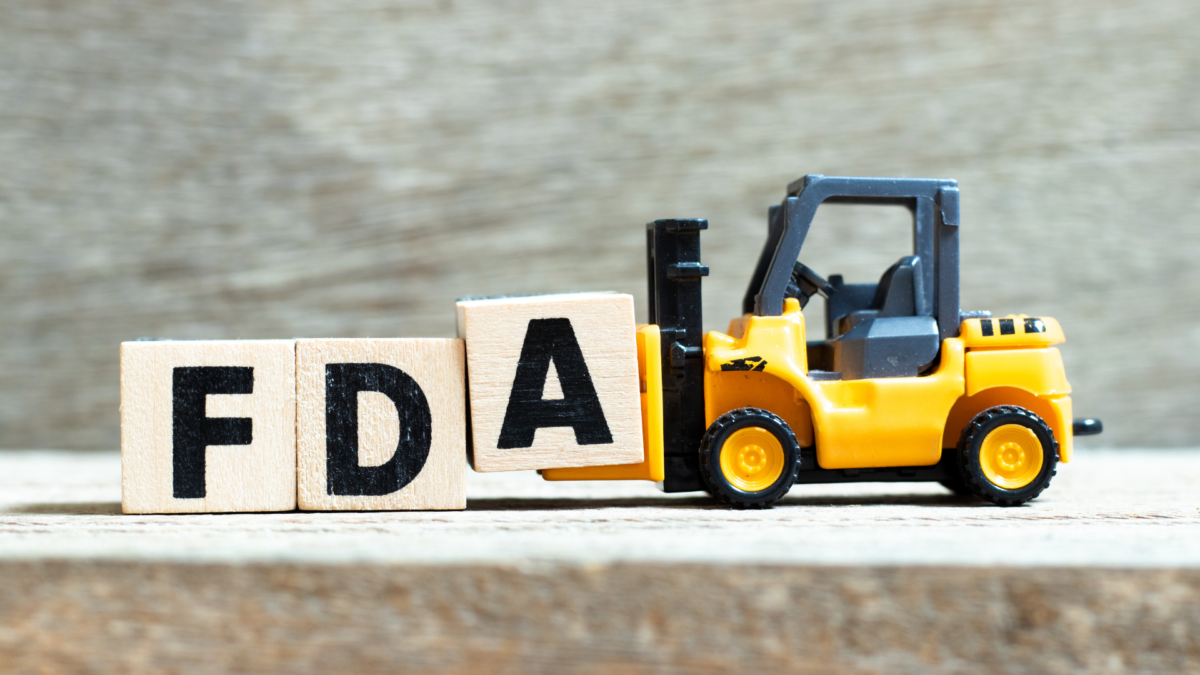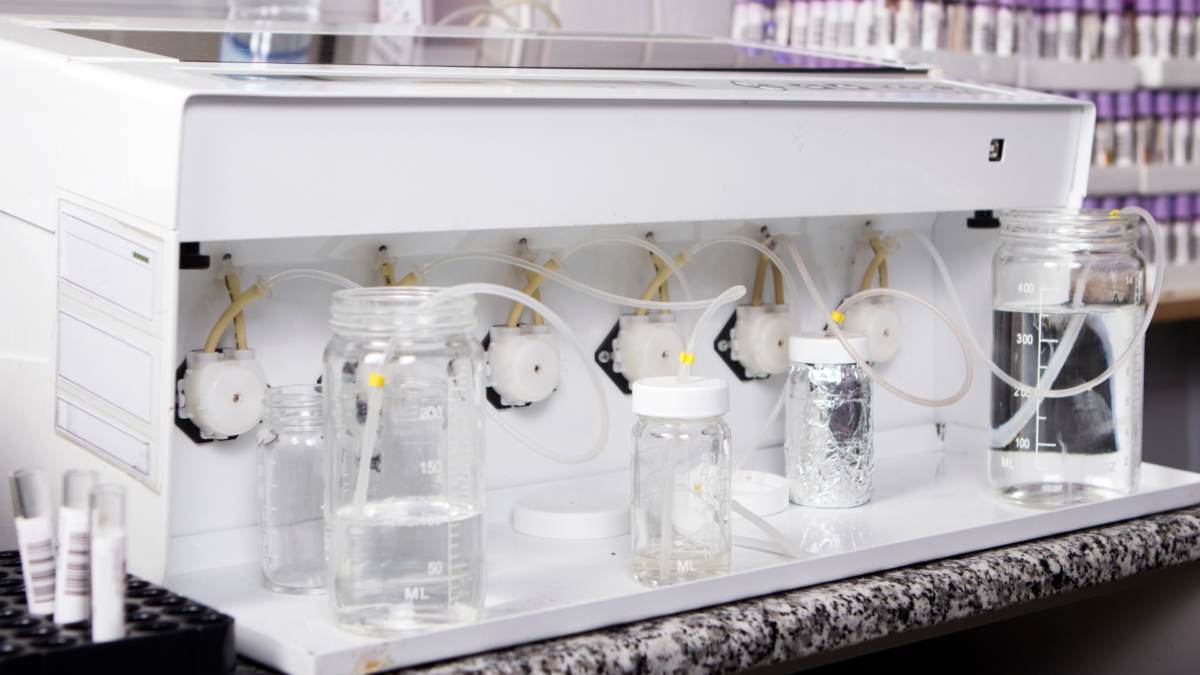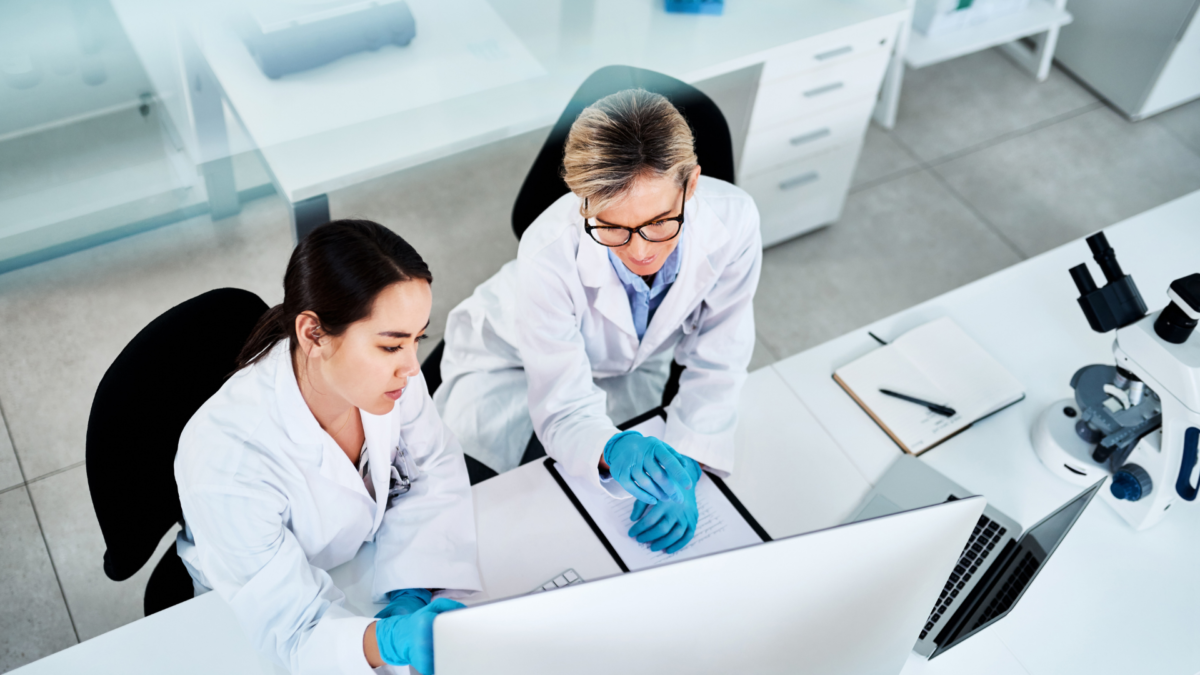[TECH LETTER] Substance-Based Products
Manufacturers producing substance-based products need to qualify their products to be in compliance with the appropriate European legal framework.
This can be challenging, as depending on the mode of action and intended purpose, their product can be regulated by Directive 2001/83/EC relating to medicinal products for human use (MPD) or by the Medical Device Regulation 2017/745 (MDR).
In this Downloadable Techletter, we provide important information that will support you in this process.
GET THE TECHLETTER
Please submit the form:
[TECH LETTER] Cybersecurity requirements
Where does regulatory compliance with cybersecurity requirements begin?
Traditionally, we would rely on state-of-the-art or harmonized standards to demonstrate conformity with such GSPRs, but things quickly complicated, since it is not entirely clear, which standards represent the state-of-the-art for security of medical and IVD devices.
This applies to both the security-related processes at the company level, as well as security capabilities of the device itself.
In this Downloadable Techletter, we discuss a short list of key sources for both knowledge and application of fundamental security concepts to the lifecycle of medical and IVD devices.
GET THE TECHLETTER
Please submit the form:
[TECH LETTER] Spare parts, repair, refurbishment vs. “fully refurbished”
A recurring question related to the repair of devices is whether external, well-qualified, repair shops may pursue their device reparation activities under the MDR.
Where lies the boundary between “spare part” and “accessory for a medical device? When is repair considered equivalent to “fully refurbishing”?
This Downloadable Techletter aims at clarifying the definitions for these terms and determining the possibilities that remain for healthcare institutions.
GET THE TECHLETTER
Please submit the form:
[TECH LETTER] Claims and their substantiation
This Downloadable Techletter discusses Article 7 of the MDR & IVDR and its implications in terms of the safety and performance data required to substantiate a given claim.
The claims made by a manufacturer regarding the intended use, safety, and performance of their medical device or IVD medical device, both in their form and content, indubitably play an important role toward the commercial success of their product.
It is therefore in the manufacturer’s interest to formulate the most appealing claims possible on the device. This can in certain cases lead to the communication of exaggerated or ambiguous claims on the device, particularly in, but not limited to, promotional material.
It is however imperative for manufacturers to have a clear understanding of what they are allowed or have the obligation to communicate to the user or patient regarding the intended purpose, safety, and performance of their medical devices.
MDR/IVDR Article 7 states in essence that device manufacturers may not communicate any claim on the device which is not adequately supported by objective data. In this context, manufacturers should early in their device development stages define plans and methods in order to capture the safety and performance data necessary to substantiate any claim they intend to make on their devices.
GET THE TECHLETTER
Please submit the form:
[WHITE PAPER] MDR Compliant Technical Documentation
This downloadable white paper co-authored by Medidee and BSI, one of the largest Notified Bodies, gives manufacturers an interpretation of how the changes necessary for the move from compliance with the MDD/AIMDD to the MDR might be implemented, as well as practical hints on what needs to be considered in order to maintain technical documentation as stipulated by the MDR. Although being issued back in 2019, its content remains widely relevant and applicable when it comes to the constitution of MDR-compliant Technical Documentation.
As a Manufacturer, you may have wondered how to ensure your Technical Documentation Complies with EU Medical Device Regulation 2017/745. Indeed, before placing a medical device on the European market, manufacturers need to produce technical documentation providing evidence of conformity with the relevant legislation.
Technical documentation had to comply with the Medical Devices Directive (MDD) 93/42/EEC or the Active Implantable Medical Devices Directive (AIMDD) 90/385/EEC (referred to as ‘MDD/AIMDD’ hereafter).
Since 26 May 2021, manufacturers willing to obtain or renew a CE certificate or to issue a Declaration of Conformity (DoC), are required to have their technical documentation compliant with the Medical Device Regulation (MDR) European Union (EU) Regulation 2017/745 (referred to as ‘MDR’ hereafter).
However, as indicated in Article 120 of the MDR, after 26 May 2021, medical devices can still be placed on the market under the provision of the MDD/AIMDD, providing the certificate was issued prior to this date, that manufacturer continues to comply with either one of the directives and that no significant changes are made in the design and intended purpose of the device.
But Manufacturers of such devices will also have to meet other requirements, which are detailed in Article 120 of the MDR and referenced in this white paper. The certificates issued in accordance with MDD/AIMDD after 25 May 2017 remain valid until reaching their expiry date, but in any case, they become void latest on 27 May 2024.
This necessitates changes for the manufacturers, Competent Authorities (CAs) and Notified Bodies (NBs) on how the technical documentation should be developed and handled.
As mentioned in the first paragraph from Annex II of the MDR, ‘the technical documentation and, if applicable, the summary thereof to be drawn up by the manufacturer shall be presented in a clear, organised, readily searchable and unambiguous manner and shall include in particular the elements listed in this Annex’.
Reading the MDR it becomes evident that the requirements for technical documentation have been raised and will also be subject to more scrutiny by the CA/NB as appropriate.
GET THE WHITEPAPER
Please submit the form:
[ARTICLE] The Regulatory Landscape and the Conformity Assessment Pathways for Masks
Masks have become the mainstay of public health measures adopted during the SARS-CoV-2 pandemic. This article outlines the regulatory landscape and illustrates the nuances that dictate the correct market entry and regulatory strategy for Legal Manufacturers of the various types of masks.
A distinction can be made between three types of masks:
- Community face coverings,
- Surgical/medical masks, and
- Filtering face pieces/respirators
Community face coverings
Community face coverings are sewn from commercially available fabrics and worn in everyday life. In contrast to medical face masks or particle filtering half masks, the EU regulatory framework has not established specific legal provisions for community face coverings. The General Product Safety Directive (GPSD) 2001/95/EC would therefore apply to these masks.
Thus, these are typically not tested in accordance with any relevant legal and normative requirements, and without prejudice to potential specific provisions of EU Member State national legislations regulating these types of face masks, they can therefore be brought to market without any regulatory procedures. In light of the SARS-CoV-2 pandemic, however, these have become a fundamental element of national strategies for containing the spread of the virus, and the European Commission has identified the urgent need for a harmonised and consistent degree of safety in community face coverings.
To respond to this with urgency, CEN has published a workshop agreement on "Community face coverings - Guide to minimum requirements, methods of testing and use", in which considerations relating to design, performance, test methods, packaging, marking and, information for use are noted.
Community face coverings are however not subject to any mandatory conformity assessment by notified bodies or laboratories.
Their design in accordance with accepted best practices and production quality control shall remain the producer's responsibility [1].
Community face coverings that are placed on the market and which meet the requirements laid down in the workshop agreement can be designated as follows: Community face coverings CWA17553:2020 or National specification designation followed by CWA 17553:2020.
Surgical Masks
Surgical masks, also called ‘procedural’ or ‘medical’ masks protect the patient from transmission of infective agents from the wearer and, additionally, in certain circumstances protect the wearer against splashes of potentially contaminated liquids.
These may also be intended to be worn by patients and other persons to reduce the risk of spread of infections, particularly in epidemic or pandemic situations [2]. By virtue of their use “during treatment of human beings”, and “for prevention of disease”, these qualify as Medical Devices.
Before placing these on the European market, Legal Manufacturers are therefore required to ensure compliance with European Medical Device Directive 93/42/EEC as amended by Directive 2007/47/EC (only possible until 26 May 2021) or European Medical Device Regulation (EU) 2017/745.
When worn correctly, such masks cover the nose with the metal band contouring the bridge of the nose, the mask is drawn under the chin and secured in place with ear loops or by tying the tapes firmly around the back of the head. Even though these masks offer high degree of bacterial filtration efficiency, they do not form a tight seal around the nose and the mouth and are understood to function as barriers that offer only limited protection.
Filtering face pieces
Filtering face pieces (FFP), on the other hand, form a tight seal around the nose and mouth [3] and protect the user from being exposed to noxious particles, gases and microorganisms including bacteria, viruses and fungi. By virtue of these masks being “worn for protection against one or more risks”, these qualify as Personal Protective Equipment.
Before placing these on the European market, Legal Manufacturers are therefore required to ensure compliance with European Personal Protective Equipment Regulation (EU) 2016/425.
The intended use and the specific claims advanced by the Legal Manufacturer determine the product category to which a mask will belong, and the subsequent conformity assessment procedures.
-
1/ As medical devices, single use, non-sterile masks usually fall in the lowest risk classification (Class I). For such products, after fulfilling the obligations specified in Art. 10 of (EU) 2017/745:
- the Legal Manufacturer will register the product,
- issue a Declaration of Conformity, and
- affix the CE mark to the product before placing it on the market.
- perform an EU-type examination and a review of the Technical Documentation (Module B),
- followed by either:
- a review of production quality assurance (Module D), or
- internal production control plus supervised product checks at random intervals (Module C2).
- After successful completion of the conformity assessment, the Legal Manufacturer shall affix the CE mark to the product before placing it on the market.
2/ As personal protective equipment, masks intended to protect the wearer from harmful/noxious substances and particles fall in the highest risk categorisation (Category III). For such products, after fulfilling the obligations specified in Art. 8 of (EU) 2016/425, the Legal Manufacturer shall submit an application for conformity assessment to a Notified Body that will :
Table 1 summarises the major differences between these masks and the applicable regulatory requirements.
How Medidee can help
At Medidee, our expertise extends to designing market entry strategies, and review/preparation of Technical Documentation and Quality Management Systems needed by Legal Manufacturers of Surgical/Medical Masks and FFP/Personal Protective Equipment. Contact us now!
This article was written by Dr Mohit Kumar.
References
[1] “Community face coverings - Guide to minimum requirements, methods of testing and use,” CEN-CENELEC Management Centre, Brussels, CWA 17553:2020, 2020.
[2] “Medical face masks – Requirements and test methods,” CEN-CENELEC Management Centre, Brussels, EN 14683:2019+AC:2019, 2019.
[3] “Respiratory protective devices – Filtering half masks to protect against particles – Requirements, testing, marking,” CEN Management Centre, Brussels, EN 149:2001+A1:2009, 2009.
[ARTICLE] FDA Breakthrough Devices Program (BDP) and Safer Technologies Program (STeP) for Medical Devices
Launched in 2016, the FDA Breakthrough Devices program (BDP) is intended to provide patients with more rapid access to medical devices that are foreseen to enable a more effective treatment or diagnosis of life-threatening or irreversibly debilitating diseases or conditions.
The new FDA Safer Technology Program (STeP) which is operational since March 2021, aims to accelerate patient access to medical devices that are expected to improve the safety of treatments targeting diseases that are less serious than those qualifying for the existing BDP.
A BDP or STeP designation for a device notably allows companies to benefit from additional FDA input, flexibility with regards to clinical study design and quality system and manufacturing information requirements, and prioritized review during the premarket phase; and can therefore considerably diminish the time necessary for US market approval.
This article will review the principles, features, requirements, application processes, and benefits, of both programs.
The Breakthrough Devices Program (BDP)
The FDA Breakthrough Devices Program (BDP) is a voluntary program intended to ensure patients with timely access to certain medical devices and device-led combination products that provide for more effective treatment or diagnosis of life-threatening or irreversibly debilitating diseases or conditions. It is available for devices and device-led combination products subject to review under a premarket approval notification (PMA), premarket notification (510(k)), or De Novo classification request (“De Novo Request”).
Companies designated for the BDP benefit from additional feedbacks from the FDA during the premarket phase, although the designation does not change the statutory standards for PMA, 510(k) clearance, or De Novo marketing authorization. The Breakthrough Devices Program replaced the previous Expedited Access Pathway (EAP) and Priority Review for medical devices.
The FDA has issued a guidance document on the Breakthrough Devices Program that provides detailed information on the program principle, on the procedure for designation request, and on the program features.
Devices are eligible for breakthrough device designation if both of the following criteria are met:
- The first criterion is that the device provides for more effective treatment or diagnosis of life-threatening or irreversibly debilitating human disease or conditions.
- The second criterion is that the device also meets at least one of the following:
a) Represents breakthrough technology
b) No approved or cleared alternatives exist
c) Offers significant advantages over existing approved or cleared alternatives
d) Device availability is in the best interest of patients
When a device is granted the Breakthrough Device Designation, the manufacturer is ensured direct interactive communication with a sufficient number of well-trained FDA staff, including senior management, with expertise in the application of the BDP.
Interaction with the FDA to obtain feedback on the device development is managed through a variety of options, including “sprint” discussions (i.e. discussions with the goal of reaching mutual agreement on a specific topic within a set time frame (e.g. 45 days)), request for discussion on a Data Development Plan, and request for discussion to reach clinical protocol agreement.
With regards to the last aforementioned point, the FDA will take steps to ensure that the design of clinical trials is as efficient and flexible as practicable. It will, for instance, allow the study design to be adapted during the clinical study and/or approval process.
Moreover, the FDA may allow for part of non-clinical and clinical data to be collected in the post-market phase, provided there are no major safety concerns. In addition, with the BDP designation there is also a prioritized review of regulatory submissions, including Q-Submissions, Investigational Device Exemption (IDE) applications, and marketing submissions.
Finally, for PMA submissions that typically require a preapproval inspection, the FDA intends to expedite the review of manufacturing and quality system compliance for BDP-designated devices.
If the manufacturer can show compliance with the statutory and regulatory requirements by other means than submitting the all the items listed in the FDA guidance “Quality System Information for Certain Premarket Application reviews”, the FDA may accept less quality and manufacturing information. This may occur for instance when the manufacturer has a good track record for quality system compliance and that no new manufacturing issues that could negatively affect product quality or performance are identified. In appropriate cases, the FDA may decide it is acceptable to conduct the inspection of the manufacturing sites after the device has been approved through the BDP.
How to apply for the Breakthrough Devices Program?
To apply for the BDP program, manufacturers shall submit a special Q submission named “Designation Request for Breakthrough Device”. The submission should provide information to describe the device, the indications for use, regulatory history, and it should explain in details the rationale why the device meets the requirements to be eligible for the program. If other requests for FDA feedback are concomitantly pending, manufacturers should consider submitting them after the FDA renders the BDP designation decision as a BDP designation may affect the feedback that FDA provides on the other requests.
The FDA will issue a decision on the BDP designation within a maximum of 60 calendar days, and request any additional information it may require within 30 days. The BDP designation request typically takes the form of an approximately 30 page submission file and usually requires a few weeks for preparation, if necessary with the support of a consulting firm.
Despite a report that the FDA may be open to making public devices having received BDP designations in the future, the decision to do so remains for the moment at the discretion of the manufacturers participating in the program.
It is therefore difficult to obtain reliable data on how frequently BDP designations are solicited and granted. Nonetheless, according to an article published in May 2020 by MedTech Dive who was able to obtain data relating BDP designations from the FDA, there were 11 devices awarded with a BDP designation in 2016, 19 in 2017, and 55 in 2018, 136 in 2019 and 50 and in 2020 as of May.
Thus, the BDP program is increasingly gaining popularity, showing roughly a two-fold increase in BDP designations per year since the launch of the program in 2016. Of these, five BDP-designated devices received full marketing authorization in 2019 (three PMAs, one 510(k), and one De Novo).
No information regarding the number of devices that won final marketing authorizations under the program in 2020 could be retrieved. Nonetheless, this number is expected to increase proportionally to the number of granted designations.
The Safer Technology Program (STeP)
The new Safer Technology Program (STeP) for Medical Devices was designed as a complement to the BDP. The STeP is highly similar to the latter, but tailored for medical devices and device-led combination products that are reasonably expected to significantly improve the safety of treatments targeting an underlying disease or condition less serious than those qualifying for the BDP.
These may include for example devices intended to treat or diagnose non-life-threatening or reversible conditions. As for the BDP, STeP is also available for devices and device-led combination products subject to review under a premarket approval notification (PMA), premarket notification (510(k)), or De Novo classification request (“De Novo Request”). The FDA issued the final guidance on the Safer Technologies Program on January 6th 2021, and anticipated accepting program entrance requests as of March 8th, 2021.
For a device to be eligible for STeP designation, it should meet the following criteria:
- The first criterion is that the device should not be eligible for the Breakthrough Devices Program (BDP) in reason of the less serious nature of the disease or condition treated, diagnosed, or prevented by the device; and
- The second criterion is that the device should be reasonably expected to significantly improve the benefit-risk profile of a treatment of diagnostic by means of substantial safety innovations that provide for at least one of the following:
a) A reduction in the occurrence of a known serious adverse event,
b) A reduction in the occurrence of a known device failure mode,
c) A reduction in the occurrence of a known use-related hazard or use error, or
d) An improvement in the safety of another device or intervention
Similarly to a BDP designation request, manufacturers should apply for a STeP designation by submitting a Q-Submission requesting inclusion in the STeP program. This request should be highlighted in the accompanying cover letter. The request should provide information to describe the device, the expected safety improvement, the indications for use, regulatory history, and justification as to why the device meets the specific STeP eligibility factors.
More information on the contents of a Q-Submission Request for inclusion in STeP may be found in appendix I of the STeP final guidance. Once the program will be operational, the FDA intends to request any additional information it may require on the request for inclusion in STeP within 30 calendar days, and to issue its final decision within 60 days.
Once a device is designated for the Safer Technology Program, the manufacturer can choose to interact with the FDA through the same options as for the BDP, including interactive and timely discussions with FDA staff, senior management engagement, early engagement on Data Development Plans, and sprint discussions. Similarly as within the BDP program, the FDA will also allow for a certain degree of flexibility on clinical trial design and for the collection of non-clinical and clinical data.
In appropriate cases, the FDA also intends to expedite the review of manufacturing and quality system compliance for STeP designated devices by demanding less quality system and manufacturing information, or waiving the requirement for a preapproval inspection of the manufacturing sites.
As the STeP program is not yet operational at the time of writing this article, no data is currently available regarding the number of STeP designations and approvals.
In summary, the FDA Breakthrough Devices and Safety Technology Programs provide considerable advantages that can significantly reduce the time for US market access for devices fulfilling either set of specific inclusion criteria described above. It shall be emphasized that the BDP and STeP programs are complementary and will run in parallel. The BDP addresses devices that provide for more effective treatment or diagnosis of life-threatening or irreversibly debilitating diseases or conditions, whereas the STeP is intended for devices expected to increase the safety of treatments or diagnosis of less serious diseases. Once designated for either of the programs, the manufacturer can expect interactive and timely interaction with the FDA, senior FDA management engagement, priority review, and flexibility with regards to the pre/postmarket balance of data collection, clinical study design, and quality and manufacturing information requirements.
How Medidee can help
Does your medical device potentially meet the criteria for inclusion in the BDP or STeP programs? Our dedicated US market specialists at Medidee are well-experienced with the Breakthrough Devices Program, and may assist you determining whether your product qualifies for inclusion in the BDP or STeP programs, in preparing and submitting your BDP or STeP designation request, and in subsequent interactions with the FDA once the designation is granted. Contact us now!
This article was written by Dr Jérôme Randall.
[ARTICLE] Incident reporting until release of the EUDAMED Vigilance module
The EUDAMED Vigilance module will serve notably for the reporting of serious incidents involving medical devices. Until the EUDAMED Vigilance module is operational, manufacturers shall continue to report incidents directly to the relevant National Competent Authority(ies).
In December 2018, the European Commission published the new Manufacturer Incident Report (MIR) form for manufacturers to use in this process. The form introduced novel information requirements under the MDR 2017/745/EU / IVDR 2017/746/EU such as trending data based on relevant similar incidents, and also integrates the use of harmonized adverse event terminology and codes recommended by the International Medical Device Regulators Forum (IMDRF).
The information requirements for Incident reporting using the new MIR form are announced to be highly similar to those for the upcoming EUDAMED Vigilance module, and the latter will also integrate the use of IMDRF terminology to describe adverse events, their causes, and their consequences on users/patients.
The new MIR form has since been updated twice. The latest version, MIR version 7.2.1, became applicable from January 1st, 2020, for the reporting of Incidents under both the EU Directives and the Regulations for both medical devices and IVDs. These comprise incidents reportable under the AIMDD 90/385/EEC / MDD 93/42/EEC / IVDD 98/79/EC as defined in MEDDEV 2.12/1 Guidelines on a medical device vigilance system, and Serious Incidents under the MDR / IVDR. Accordingly, wherever the form refers to “incidents”, one should read “serious incident”, in other words reportable event, when the form is used to report under the MDR/IVDR.
A clarification has to be made regarding the difference between an Incident under the AIMDD/MDD/IVDD and a Serious Incident under the MDR/IVDR. These two terms mean the same thing, there is just a slight modification of the wording for the definition of Serious Incident as per the MDR/IVDR:
"Serious incident means any incident that directly or indirectly led, might have led or might lead to any of the following: the death of a patient, user or other person; the temporary or permanent serious deterioration of a patient's, user's or other person's state of health; a serious public health threat".
Hence, events that were reported as Incidents under the AIMDD/MDD/IVDD, are now considered as Serious Incidents under the MDR/IVDR. It shall be noted that the MDR/IVDR also define Incidents. However, under the Regulations, Incidents refers to degradation of the characteristics and performance of the device, including use error to ergonomic features as well as any inadequacy in the information supplied by the manufacturer and any undesirable side-effect, which only require to be reported if they also qualify a Serious Incidents.
It shall be emphasized that completing the different fields of the new MIR form is a complex and time-consuming task, particularly in comparison with what was previously required for incident reporting under the AIMDD/MDD/IVDD
The use of the new MIR form to report Incidents is mandatory since January 2020. It shall be emphasized that completing the different fields of the new MIR form is a complex and time-consuming task, particularly in comparison with what was previously required for incident reporting under the AIMDD/MDD/IVDD. Indeed, the main purpose of this new form is to have more complete information of the incidents and to be able to collect the data in a harmonized way.
The IMDRF terms and codes to be employed for filling in the MIR form can be found in the IMDRF Adverse Event Terminology web browser. The main tool provided by the EC to support manufacturers in the implementation of the MIR form is the New manufacturer incident report help text.
This living document clarifies which fields are mandatory or voluntary to complete in function of the different types of reports (initial, update, final, etc.) pertaining to the main Incident reporting stages, and moreover provides practical guidance on how to fill certain fields of the MIR form. It shall furthermore be noted that new MIR XSD and XSL files are available for implementation in manufacturers' databases.
Medidee can offer support to manufacturers in completing and submitting the new MIR form, and, for manufacturers wishing to implement the MIR XSD and XSL files within their own databases, support in validation of the solution.
Contact us now!
This article was written by Dr Jérôme Randall.
[ARTICLE] Future classification of IVD instruments
The new Regulation 2017/746 on in vitro diagnostic devices (IVDR) will enter into force on May 26th, 2022. The IVDR introduces a rule-based risk IVD device classification system aligned with what is applied for medical devices. This system will replace the current classification system under the IVDD which classifies IVD devices based on pre-established lists and categories of products which in turn define the appropriate conformity assessment route to achieve market access.
The IVDR establishes four risk Classes A, B, C, and D with A being the lowest risk Class and D the highest, into which IVD devices will be classified taking into account the intended use of the device. The classification of devices into the different classes is determined by seven classification rules laid out in Annex VIII.
The possible conformity assessment pathways made available to manufacturers in order to market an IVD device and the level of requirements they entail are respectively determined by and proportionate to its risk classification.
Conformity assessment procedures for Risk B, C , and D Class IVD devices require verification and certification by a notified body, whereas only the conformity assessment for Class A IVD may be conducted without verification by a notified body to establish a declaration of conformity according article 17 for “placing on the market”.
The IVDR risk classes
A major consequence of the new classification system under the IVDR is that in contrast with the current system where most IVD devices currently on the market underwent conformity assessment without verification by a notified body, the majority of devices will fall in risk classes higher than A and therefore be subject to conformity assessment procedures outlined by annexes IX, X and XI, requiring the involvement of a notified body.
The question of whether an IVD device classifies in risk Class A is therefore an essential one as this will have important implications in terms of the resources needed to achieve market access.
The rule determining if a device classifies as a Class A device is classification rule 5, which states:
The following devices are classified as class A:
- (a) products for general laboratory use, accessories which possess no critical characteristics, buffer solutions, washing solutions, and general culture media and histological stains, intended by the manufacturer to make them suitable for in vitro diagnostic procedures relating to a specific examination;
- (b) instruments intended by the manufacturer specifically to be used for in vitro diagnostic procedures;
- (c) specimen receptacles
This classification rule leads to interpretation issues, among which is point (b) regarding the classification of instruments specifically intended by the manufacturer to be used for in vitro diagnostic procedures, hereafter termed IVD instruments.
The classification by default of all IVD instruments into Class A comes somewhat as surprising
The classification by default of all IVD instruments into Class A comes somewhat as surprising. In doing so, the regulators were likely considering the typical IVD analyzer used with an analyte-specific reagent or kit or device, for instance an ELISA plate reader. In this case, the instrument would classify as Class A and the reagents and kit would be classified in their own right, in Class B or higher.
Currently an increasing number of IVD instruments can provide diagnostic information on biological markers without using additional analyte-specific reagents
Nonetheless, currently an increasing number of IVD instruments can provide diagnostic information on biological markers without using additional analyte-specific reagents. Examples include instruments measuring blood gases or glucose via its sensors, automated hematology analyzers used to identify blood conditions such as thrombocytopenia or thalassemia, or devices performing refractometry on dried plasma spots for the detection of markers for multiple conditions such as cancer or neurodegenerative diseases.
How will some instruments be impacted by the IVDR?
A simplified interpretation of rule 5 would result in its classification into Class A, regardless of the intended use or risk the condition or pathology being tested represents for the wider population. It is nonetheless our understanding that as the classification of an IVD device is governed by its intended use (implementing rule 1.1), and that if several classification rules apply to the same device, the rule resulting in the higher classification shall apply (implementing rule 1.9), the IVD instrument will be classified according to its intended use by application of the most stringent applicable classification rule.
- If more than one intended uses are formulated for the instrument, it will be classified according to the intended use which results in its classification in the higher Class(implementing rule 1.8).
- If none of the other classification rules than rule 5 were to apply, for instance for instruments intended for the analyte-agnostic analysis of compounds in human specimens, the instrument would remain in Class A.
Thus, this appears to define two types of IVD instruments:
Those forming part of a system using additional analyte-specific reagents; and those with an independent measuring function which does not use any additional analyte-specific reagents.
In the first category the instrument would classify as Class A, and the additional reagents and kits would be classified in their own right. In the second, the instrument would be classified according to its intended use and the applicable classification rule resulting in the higher classification would apply.
It is therefore capital for IVD instrument manufacturers to carefully consider the intended use of their device to ascertain that no other classification rules apply
The risk of IVD instrument misclassification under the IVDR remains nonetheless elevated. We have observed that many IVD instrument manufacturers are planning to adopt a simplified yet convenient interpretation of classification rule 5 leading to the conclusion that their instrument is in Class A, and proceed to place their product on the market following the conformity assessment procedure using article 17 without involving a notified body. It is foreseeable however that number of the latter will face the unpleasant surprise of being informed, typically during a verification by the competent authorities, that their device in fact shall be classified in a higher risk class.
In such cases, the device would require to be withdrawn from the market until conformity with the requirements associated with the higher risk class can be verified and certified by notified body, which could undeniably lead to disastrous financial consequences for the manufacturer. It is therefore capital for IVD instrument manufacturers to carefully consider the intended use of their device to ascertain that no other classification rules apply before concluding that their device classifies as Class A under classification rule 5.
The MDCG is expected to issue guidance in due time that will hopefully clarify the application of classification rule 5.
How Medidee can help
Whether you are a manufacturer of an IVD instrument already on the market seeking to prepare the transition toward the new IVDR, or a manufacturer searching to place a new IVD instrument on the market under the new regulation, Medidee will assist you in formulating a suitable intended use, in determining the appropriate classification and conformity assessment pathway for your device, as well as in the planning and execution of the activities necessary to reach compliance with the requirements of the IVDR. Contact us now!
This article was written by Dr Jérôme Randall.
[ARTICLE] ISO 14155:2020 changes to be aware of when planning, designing or conducting a clinical investigation
The new ISO 14155:2020 - Clinical investigation of medical devices for human subjects – Good Clinical Practice was released in July 2020. This third edition supersedes the 2011 version, which was updated as to conform with the upcoming MDR.
ISO 14155:2020 is expected to be harmonized rapidly without content deviations as it is the European Commission’s priority to provide a reference standard to support the provisions of the MDR pertaining to clinical investigations.
Therefore, the Annex Z showing the correlation between the requirements of the standard and those of the relevant Directives and Regulation should soon be released by the CEN (European Committee for Standardization) for harmonization under the European Directives 90/385/EEC for active implantable medical devices (AIMDD) and 93/42/EEC for medical devices (MDD), and under the European Regulation 2017/745 for medical devices (MDR). No official transitional period has been communicated for this updated standard, and thus it is considered applicable as of its date of publication.
Changes induced by the new ISO 14155:2020
Aside from the main documentary changes listed in the foreword of the standard, the major changes to be aware of when planning, designing or conducting a clinical investigation are:
-
- Clinical investigation is now 2.0: ISO 14155:2020 discusses the opportunity for remote monitoring, the acceptability of digital signature for informed consent forms and the validation process for eCRFs systems.
-
-
- Clinical investigations must be registered in a publicly accessible database, such as clinicaltrials.gov. The registration must be updated and results must be published after the completion of the investigation. Previously, certain countries required registration, whereas others did not.
-
-
- It is now an obligation to publish the investigation’s results, whether positive, inconclusive or negative. Previously, the standard only encouraged sponsors to do so.
-
- New concept of Serious health threat as a signal that indicates an imminent risk of death and requires immediate actions to be taken by the sponsor and/or the investigator.
-
- Clinical investigations, like all other medical devices related processes, should be planned, designed and conducted following a risk-based approach. Whether it is related to monitoring or adverse events reporting, risk management activities should be performed throughout the process of a clinical investigation. The newly added Annex H specifies the ties with ISO 14971.
-
- Description of the feedback loop with clinical evaluation and risk management activities, such as the use of the clinical evaluation to justify the clinical development stage, and the clinical investigation design and the update of the benefit-risk analysis.
-
- Clinical quality management is reinforced, including CAPA process.
-
- The selection of the investigation site should be performed carefully, as it is now specified that facilities should be representative of the intended use environment.
-
- In case of device deficiencies, the sponsor is now prompted to recover and analyse the faulty device.
-
- Contract Research Organizations (CROs) should be qualified suppliers of the sponsor, according to the sponsor’s QMS.
-
- The newly added Annex I brings welcome clarifications on the applicability of the requirements of this standard to the different clinical development stages and includes a useful table for the planning and design of clinical investigation in all phases of the medical device lifecycle.
-
- The sponsor must select a local representative if the sponsor is not located in the country of the study. Previously, this was requested by certain local regulations, but not in all countries.
As a medical device manufacturer, we recommend you start your transition today:
- Plan and document your transition activities;
- Implement ISO 14155:2020 in your QMS and perform a gap analysis to identify any shortcomings with the requirements of the new standard;
- Provide internal training on the new standard and affected SOPs (related processes such as risk management, clinical evaluation, CAPA, etc. are particularly relevant to consider);
- Review / Update templates for future clinical investigations (Clinical Investigation Plan, Investigator’s Brochure, etc.);
- Validate your eCRF system if not already done;
- Update contracts with your CRO and make sure they are formally qualified as a supplier.
This article was written by DR Jérôme Randall.
If you are eager to learn more about the changes incurred and gain knowledgeable insights on the application of this standard for clinical investigation planning, design, and conduct, make sure to join our ISO 14155:2020 online training, recognized by Swissethics for Investigator & Sponsor-Investigator Levels.
Furthermore, as a Contract Research Organization (CRO), Medidee will assist you with all aspects of your clinical investigation activities, from creating and submitting Clinical Trial Applications to Ethics Committees and Competent Authorities, through to initiating, monitoring and writing Clinical Investigation Reports. Contact us now!

